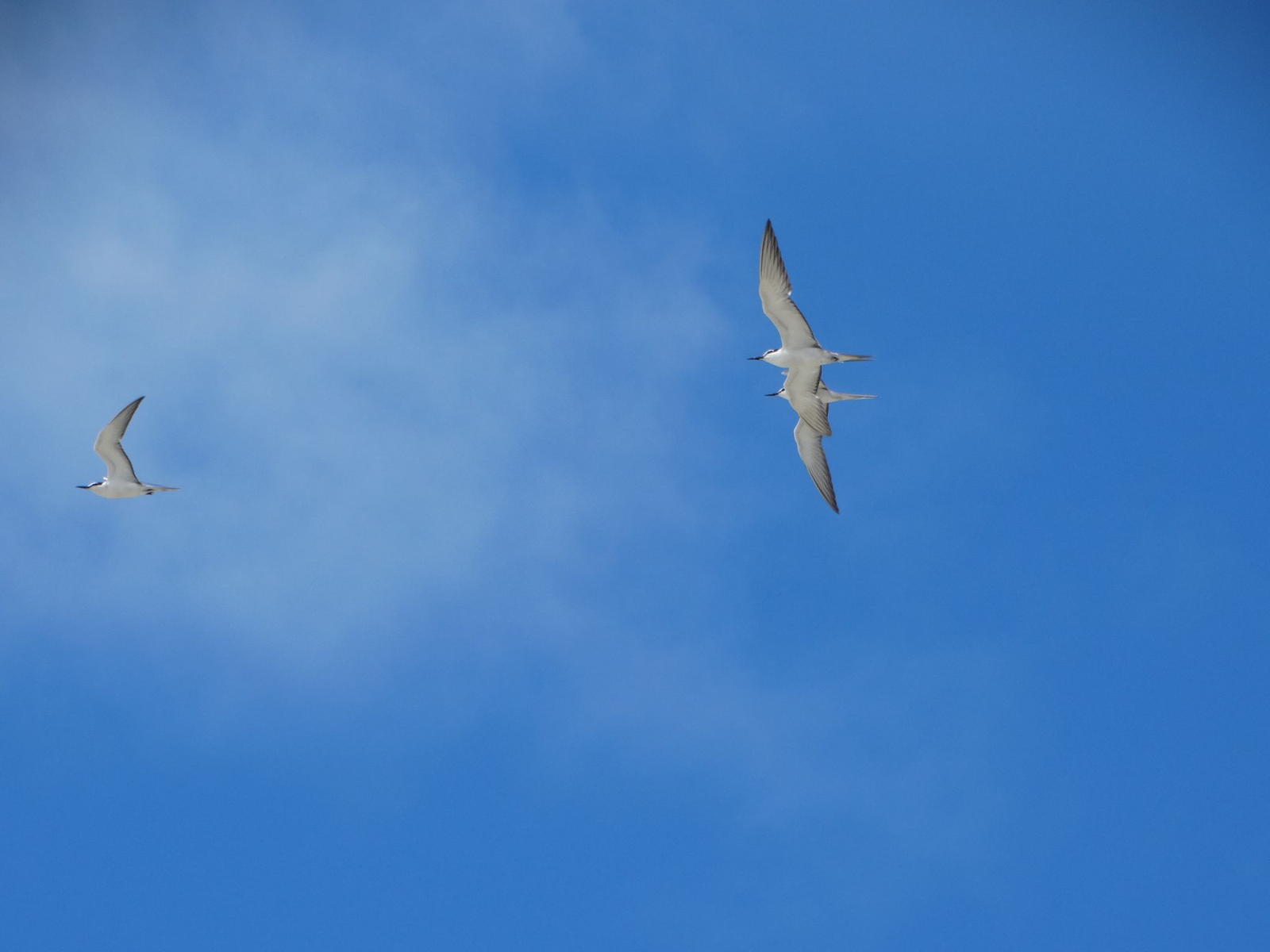A second gray-backed tern chick has been spotted at Palmyra Atoll, several hundred miles south of Hawai`i.
 |
| Gray-backed tern chick at Palmyra. TNC photo. |
The first was raised last year.
The birds were killed off on the atoll by rats, but have
begun to return since The Nature Conservancy, which manages Palmyra with the
U.S. Fish and Wildlife Service, eradicated the invasive rat population.
Many seabirds nest at Palmyra and many of the other remote
atolls and islands of the central Pacific. But eight species known to the
region were absent from Palmyra, and rats, which take both eggs and chicks, were
believed to be the reason.
Rats were wiped out in 2011, and the island’s managers
quickly began to see changes in vegetation and wildlife. In 2020, they began
experiments to try to attract seabirds that might be flying by, using both
recorded calls and decoy birds.
Last year, the first gray-backed terns nested at the atoll,
and this year, more did.
“Our science volunteers Oliver (Dunn) and Cass (Crittenden) saw 5
adults in the last month and three adults in the area near the chick. They also
saw an adult feeding a chick. Thanks to their efforts, we have more data to
show that our seabird attraction efforts are working,” said Katie
Franklin, Island Conservation Strategy Lead for The Nature Conservancy, Hawaiʻi and Palmyra.
Alex Wegmann, lead scientist for The Nature Conservancy’s
Island Resilience Strategy, said it is a milestone for TNC’s efforts.
“It also emphasizes
the value of decades of conservation and management by TNC, the US Fish and
Wildlife Service and our many partners, as well as the efficacy of seabird
social attraction methods,” Wegmann said.
 |
| Adult gray-backed terns at Palmyra. TNC photo. |
Gray-backs are one of eight species of seabird now missing
but which may once have nested there. The grays are the first to return after
the rat eradication. They are known in Hawaiian as pākalakala and their scientific
name is Onychoprion lunata.
© Jan TenBruggencate 2024









No comments:
Post a Comment